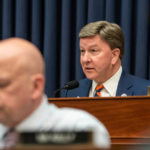
The Department of Homeland Security on Tuesday released its strategy for securing the homeland against cyber attacks and illicit cyber activity, the same day the White House reportedly eliminated the position of cyber security coordinator from the National Security Council.The new strategy, which creates a framework for DHS to carry out its cyber security responsibilities over the next five years, highlights continued and growing threats from nation-states, non-state actors, criminals, transnational criminal organizations, and proxies that make it hard to…

 By
By 











